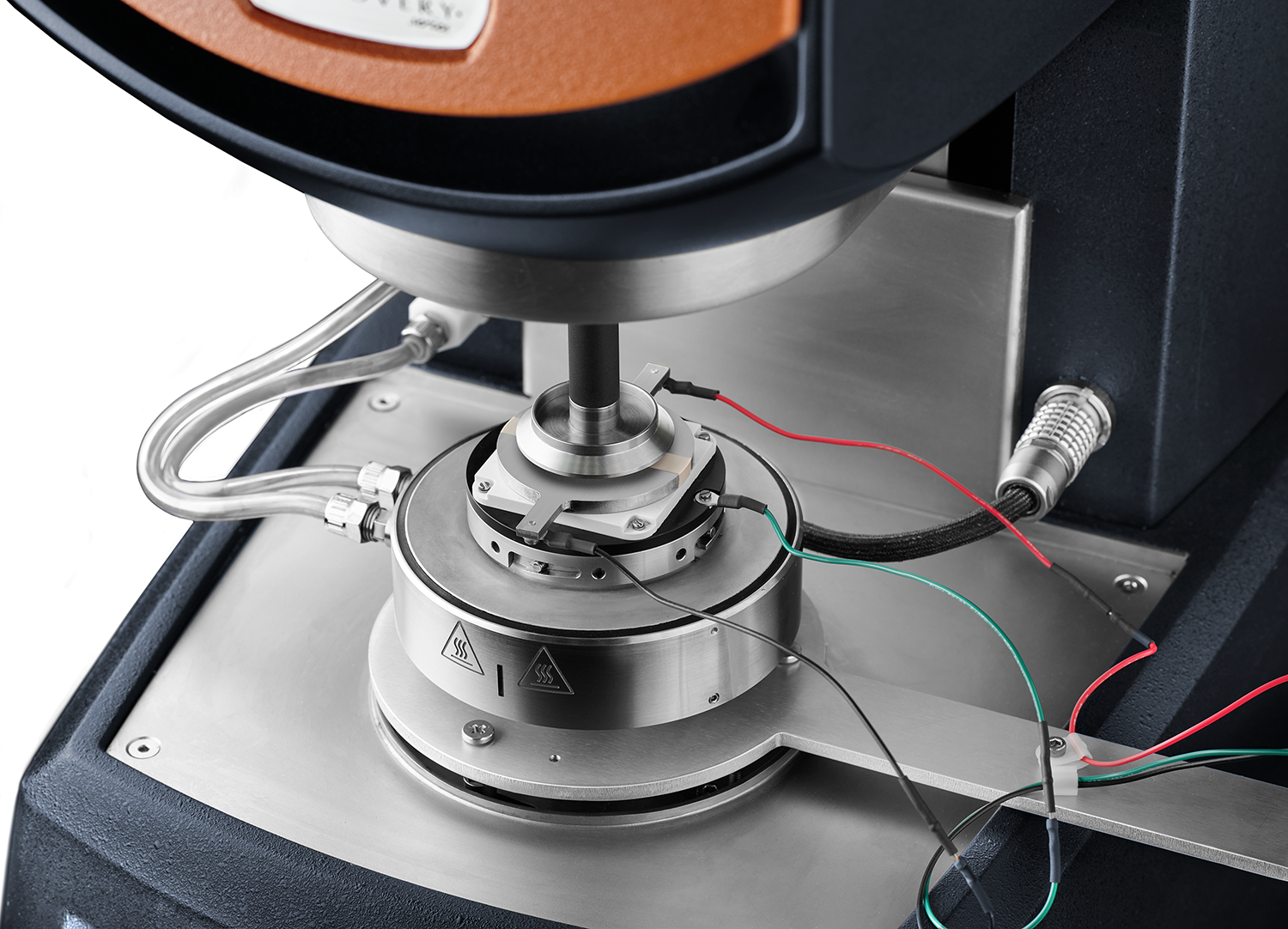Prüfung von Batterie-Slurrys durch gleichzeitige Rheologie- und Impedanzmessung
Morgan Ulrich | Hang Lau | Sarah Cotts
18. März 2024
Lithium-Ionen-Batterien werden in einem mehrstufigen Prozess hergestellt, bei dem verschiedene aktive und inaktive Materialien kombiniert werden. Materialauswahl und Verarbeitungsbedingungen können die Leistung der fertigen Batterie stark beeinflussen. Dies trifft insbesondere auf die Elektroden zu. Die Elektrodenqualität leistet einen direkten Beitrag zur Energiedichte und elektrochemischen Leistung der Batterie.
Die Elektrodenherstellung ist hochkomplex und erfordert das Mischen aktiver Materialien, Bindemittel und leitfähiger Additive zu einer Slurry-Beschichtung auf dem Metallkollektor. Anschließend wird die Elektrode getrocknet und kalandriert (verdichtet). Bei der Herstellung von Elektroden müssen Slurry-Formulierungen während der Lagerung stabil, leicht dispergierbar und fließfähig sein, um eine gleichmäßige Beschichtung zu erzeugen. Die Charakterisierung von Slurrys für eine optimale Formulierung und Verarbeitung ist ein entscheidender Schritt zur Verbesserung der Batterieleistung insgesamt.
Die Rheologie, d. h. die Untersuchung des Flusses und der Verformung von Werkstoffen unter Belastung, spielt eine entscheidende Rolle bei der Entwicklung und Optimierung von Elektrodenslurrys. Wie in einem früheren Blogbeitrag beschrieben, umfasst die Rheologie von Batterieelektrodenslurrys die Messung der Viskosität, des thixotropen Verhaltens und der Fließspannung, drei entscheidende Eigenschaften für korrekte Beschichtung und Stabilität.

Another important element of electrode performance is electrical conductivity. Lithium-ion battery cathodes typically include conductive additives such as carbon black particles to compensate for the poor conductivity of the active materials. The carbon black particles agglomerate around the active particles to form a percolation network to conduct electrons to the current collector. The conductive network structure is highly important to the final electrode performance, but shear-induced changes during coating can disrupt the electrically conductive network.
Impedance spectroscopy provides insight on the conductive material dispersion in the slurry but does not account for shear-induced changes from the coating process. Simultaneous rheology and electrochemical impedance spectroscopy directly measure shear-induced changes in the microstructure, replicating slurry coating conditions and enabling measurements of time-dependent recovery after shear. This measurement confirms that the electrically conductive network is maintained in the finished electrode, predicting successful electrode performance prior to full battery assembly.
The new Discovery Hybrid Rheometer Rheo-Impedance Spectroscopy accessory achieves unmatched data quality in both dielectric impedance and rheology measurements. The novel design eliminates the need for electrical contact with the upper tool, which limits the measurement range, and instead positions both electrodes on a lower plate with the insulated upper parallel plate geometry as a conductor. The Rheo-Impedance accessory enables testing across the full range of the DHR’s torque sensitivity, enabling precise characterization of viscosity, yield stress, viscoelasticity, and structure recovery.
Learn more about unlocking complete rheological and impedance measurements of your slurry with the new DHR Rheo-Impedance accessory. For personalized solutions and battery testing guidance, contact TA Instruments experts.
Sonstige Ressourcen
- Application Note – Characterization of LIB Cathode Slurries Using Simultaneous Measurements of Rheology and Impedance Spectroscopy
- Application Note – Rheological Evaluation of Battery Slurries with Different Graphite Particle Size and Shape
- Application Note – Time Dependent Stability of Aqueous Based Anode Slurries with Bio-Derived Binder by Rheological Methods
- Application Note – Rheological and Thermogravimetric Characterization on Battery Electrode Slurry to Optimize Manufacturing Process
- eBook – https://www.tainstruments.com/essential-battery-slurry-characterization-techniques/







